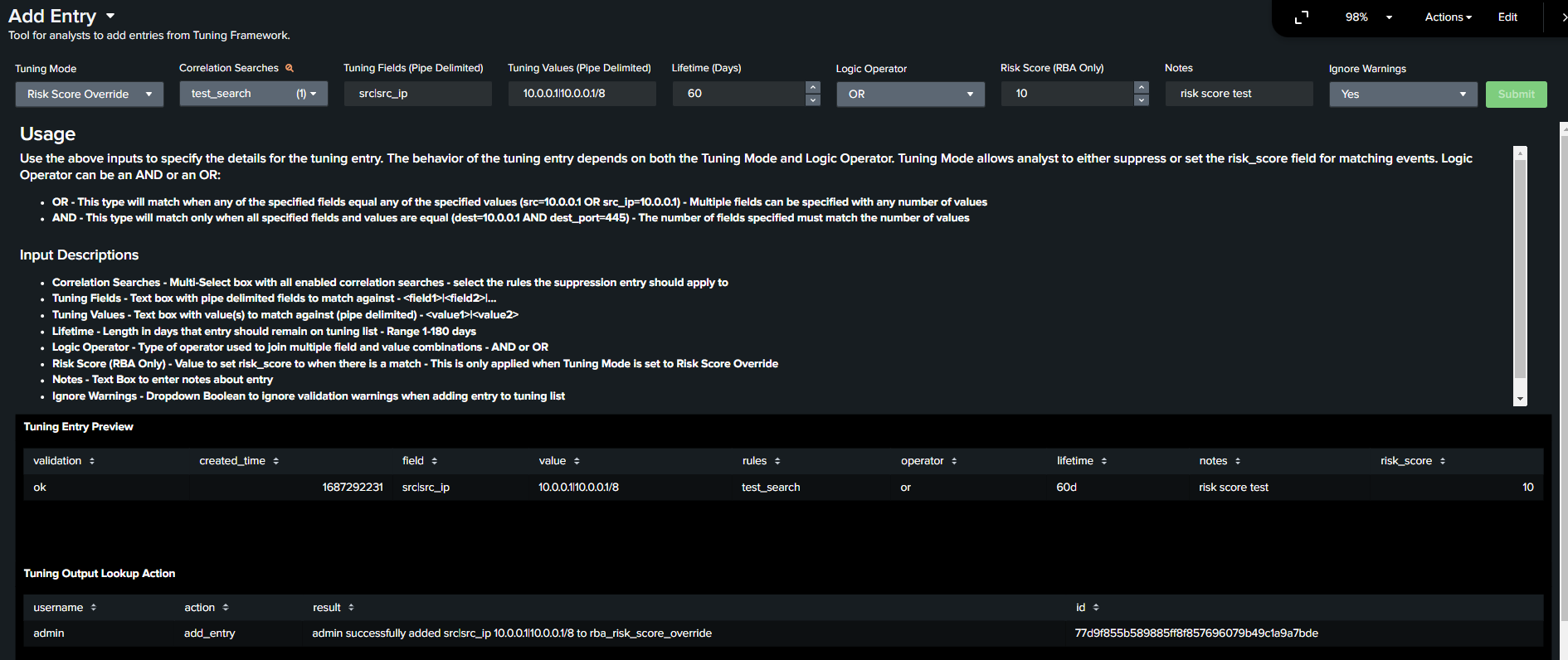








The Tuning Framework is a custom framework built in Splunk to facilitate tuning detection rules to suppress false positives or adjsut risk score for Risk Based Alerting. The framework implements a small number of lookups and macros to dynamically suppress events or adjust risk scores for all correlation searches based on any combination of fields within the events. For most Splunk environemnts, this will enhance analysts ability to quickly tune rules and greatly reduce the lift from Splunk administrators.
Analysts can use the Add Entry dashboard to add a combination of correlation search names, fields, and values to tuning lookups which will be used to suppress or adjust risk score for any events that match the specified criteria. This is done by constructing dynamic chunks of SPL to form searches and eval statements based on the contents of the lookups. By doing this, we can use a single lookup for tuning all correlation searches without having to anticipate the different combinations of fields analyst may need to match on. The risk score adjustment works whether you have implemented a macor based version of RBA or are using the Risk Analysis adaptive response action.
Full Documentation and Usage Instructions here https://github.com/murchisd/tuning_framework_for_splunk
Version 1.0.3 implements fixes for 3 bugs
* Rule Names with spaces caused tuning macros to break
* Field Names with periods would break risk score override macro
* Risk Score Macro would not properly match on any values with capital letters - case insensitive matching implemented
* Future version will allow for case sensitive matching in risk score override
Huge shout out to Splunk user john_dagostino for identifying and providing fixes for these issues!!!
As a Splunkbase app developer, you will have access to all Splunk development resources and receive a 10GB license to build an app that will help solve use cases for customers all over the world. Splunkbase has 1000+ apps from Splunk, our partners and our community. Find an app for most any data source and user need, or simply create your own with help from our developer portal.